 SNOLAB is Canada’s deep underground research laboratory, located two kilometers underground in Vale’s Creighton mine near Sudbury, Ontario, Canada. SNOLAB is a unique facility, providing a low background environment designed for scientific research and operates a 5,000m2 underground campus as a class-2000 clean lab. While the science program is focused on astroparticle physics, the location is also well suited to biology, geology and low radiological studies.
SNOLAB is Canada’s deep underground research laboratory, located two kilometers underground in Vale’s Creighton mine near Sudbury, Ontario, Canada. SNOLAB is a unique facility, providing a low background environment designed for scientific research and operates a 5,000m2 underground campus as a class-2000 clean lab. While the science program is focused on astroparticle physics, the location is also well suited to biology, geology and low radiological studies.
 A half-mile-long tunnel under Menlo Park, Calif., has become colder than most of the universe because of a particle accelerator that slams electrons together here on Earth. Using the X-ray free-electron laser at the Department of Energy's SLAC National Accelerator Laboratory – part of an upgrade project to the Linac Coherent Light Source (LCLS) called LCLS II – scientists chilled liquid helium to -456 °F (-271 °C). That is just 2 kelvins above absolute zero, the coldest possible temperature at which all particle movement ceases. That frosty environment is crucial for the accelerator because at such low temperatures, the machine becomes superconducting, meaning it can boost electrons through it with near zero energy loss. Even empty regions of space aren't this cold, as they are still filled with the cosmic microwave background radiation, a remnant from shortly after the Big Bang that has a uniform temperature of -454 °F (-271 °C or 3 K).
A half-mile-long tunnel under Menlo Park, Calif., has become colder than most of the universe because of a particle accelerator that slams electrons together here on Earth. Using the X-ray free-electron laser at the Department of Energy's SLAC National Accelerator Laboratory – part of an upgrade project to the Linac Coherent Light Source (LCLS) called LCLS II – scientists chilled liquid helium to -456 °F (-271 °C). That is just 2 kelvins above absolute zero, the coldest possible temperature at which all particle movement ceases. That frosty environment is crucial for the accelerator because at such low temperatures, the machine becomes superconducting, meaning it can boost electrons through it with near zero energy loss. Even empty regions of space aren't this cold, as they are still filled with the cosmic microwave background radiation, a remnant from shortly after the Big Bang that has a uniform temperature of -454 °F (-271 °C or 3 K).
Read More
 Since the days of NASA’s Apollo program, astronauts have documented (and contended with) how liquids like water behave differently in microgravity than they do on Earth – coalescing into floating spheres instead of bottom-heavy droplets. Now, researchers have demonstrated this effect with a much more exotic material: gas cooled to nearly absolute zero (-459 ºF or -273 ºC), the lowest temperature matter can reach.
Since the days of NASA’s Apollo program, astronauts have documented (and contended with) how liquids like water behave differently in microgravity than they do on Earth – coalescing into floating spheres instead of bottom-heavy droplets. Now, researchers have demonstrated this effect with a much more exotic material: gas cooled to nearly absolute zero (-459 ºF or -273 ºC), the lowest temperature matter can reach.
Read More
Artemis Updates: Teams Continue to Review Options for Next Attempt, Prepare to Replace Seal and Replenish Liquid Hydrogen Loading Operations
 After standing down on the Artemis I launch attempt Saturday, Sept. 3 due to a hydrogen leak, teams have decided to replace the seal on an interface, called the quick disconnect, between the liquid hydrogen fuel feed line on the mobile launcher and the Space Launch System (SLS) rocket while at the launch pad.
After standing down on the Artemis I launch attempt Saturday, Sept. 3 due to a hydrogen leak, teams have decided to replace the seal on an interface, called the quick disconnect, between the liquid hydrogen fuel feed line on the mobile launcher and the Space Launch System (SLS) rocket while at the launch pad.
Read More
 With the energy sector looking to decarbonize, the transition away from hydrocarbons is underway, with hydrogen taking center stage in many of the industry’s roadmaps. Georgia-based Chart Industries (NYSE: GTLS) has responded to this interest by bolstering its offering of products and technologies that enable the industry to move away from hydrocarbons and toward clean energy solutions.
With the energy sector looking to decarbonize, the transition away from hydrocarbons is underway, with hydrogen taking center stage in many of the industry’s roadmaps. Georgia-based Chart Industries (NYSE: GTLS) has responded to this interest by bolstering its offering of products and technologies that enable the industry to move away from hydrocarbons and toward clean energy solutions.
Read More
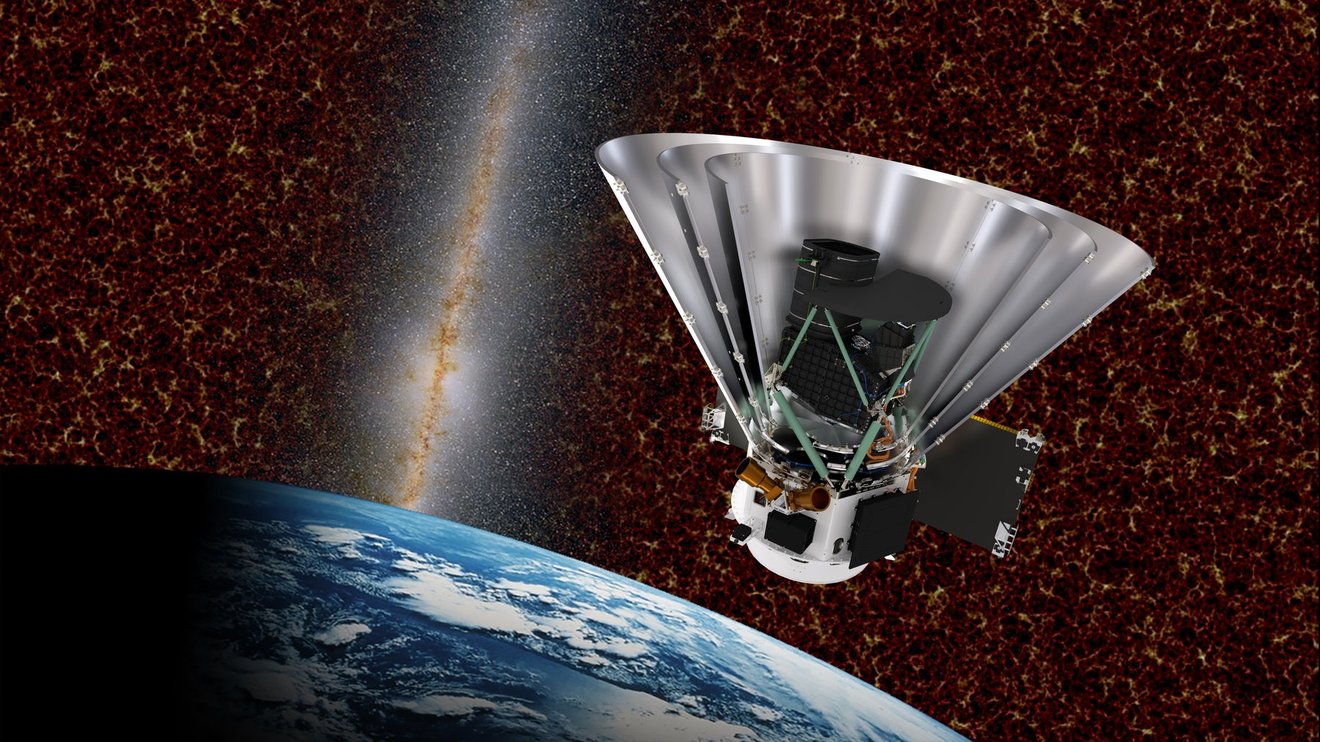 After three years of design and construction, a monthlong boat ride across the Pacific Ocean, and a lift from a 30-ton crane, the customized test chamber for NASA’s upcoming SPHEREx mission has finally reached its destination at Caltech’s Cahill Center for Astronomy and Astrophysics in Pasadena.
After three years of design and construction, a monthlong boat ride across the Pacific Ocean, and a lift from a 30-ton crane, the customized test chamber for NASA’s upcoming SPHEREx mission has finally reached its destination at Caltech’s Cahill Center for Astronomy and Astrophysics in Pasadena.
Read More
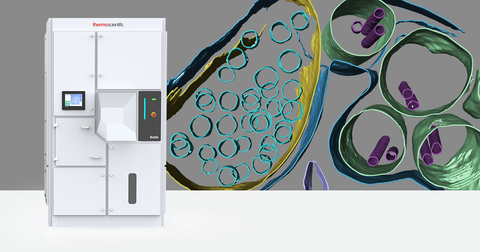 Thermo Fisher Scientific Inc. unveiled the Thermo Scientific Arctis Cryo-Plasma Focused Ion Beam (Cryo-PFIB), a new connected and automated microscope designed to advance the pace of cryo-electron tomography (cryo-ET) research. Cryo-ET makes it possible to study how proteins and other molecules operate together in a cellular context, at resolutions unsurpassed by other microscopy techniques, and has enormous potential for cell biology research, including the study of infectious disease, neurodegenerative disease, and other globally impactful structural biology applications. However, the process of preparing optimal samples for cryo-ET is still time-consuming and complex.
Thermo Fisher Scientific Inc. unveiled the Thermo Scientific Arctis Cryo-Plasma Focused Ion Beam (Cryo-PFIB), a new connected and automated microscope designed to advance the pace of cryo-electron tomography (cryo-ET) research. Cryo-ET makes it possible to study how proteins and other molecules operate together in a cellular context, at resolutions unsurpassed by other microscopy techniques, and has enormous potential for cell biology research, including the study of infectious disease, neurodegenerative disease, and other globally impactful structural biology applications. However, the process of preparing optimal samples for cryo-ET is still time-consuming and complex.
Read More
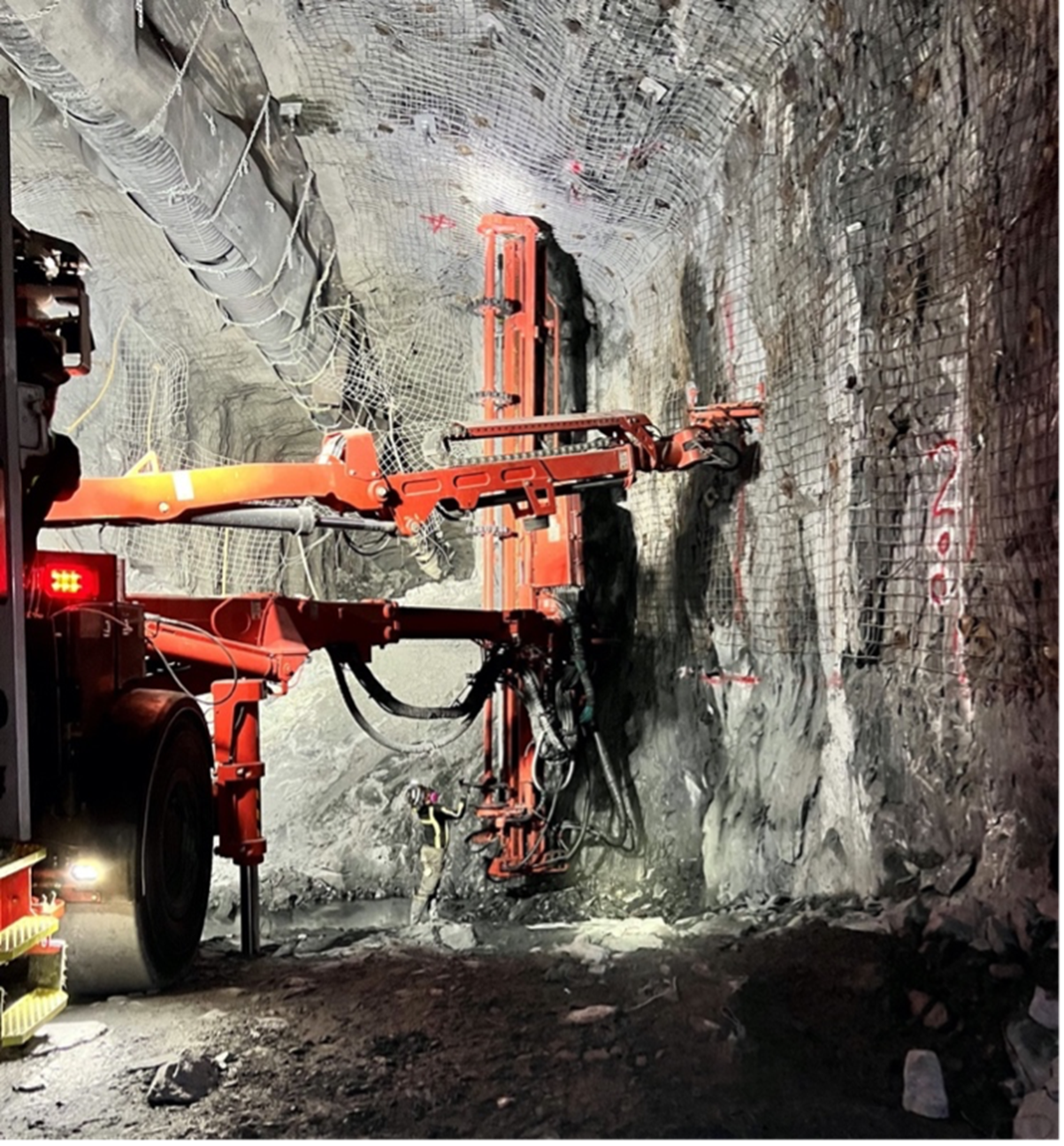 Around a mile below the surface in South Dakota, construction crews are hard at work excavating around 1,000 tons of rock per day. Their goal is to make room for a large underground facility that will house an international effort aimed at studying neutrinos—highly elusive subatomic particles that may hold the key to many of the universe’s secrets.
Around a mile below the surface in South Dakota, construction crews are hard at work excavating around 1,000 tons of rock per day. Their goal is to make room for a large underground facility that will house an international effort aimed at studying neutrinos—highly elusive subatomic particles that may hold the key to many of the universe’s secrets.
Read More
Helios and Eta Space Combine Technologies to Extract and Store Liquid Oxygen on the Moon
 Two space tech companies, Helios and Eta Space, announced they are joining forces to solve the problem of oxygen in space. If humanity is to have a sustainable presence beyond Earth, reusable methane-fueled rocket systems need liquid oxygen at a ratio of 1:4, so the only cost-effective solution to refueling in orbit is to create and store oxygen on the Moon and on Mars.
Two space tech companies, Helios and Eta Space, announced they are joining forces to solve the problem of oxygen in space. If humanity is to have a sustainable presence beyond Earth, reusable methane-fueled rocket systems need liquid oxygen at a ratio of 1:4, so the only cost-effective solution to refueling in orbit is to create and store oxygen on the Moon and on Mars.
Read More
In DNA--Scientists find solution to building superconductor that could transform technology
 Scientists at the University of Virginia School of Medicine and their collaborators have used DNA to overcome a nearly insurmountable obstacle to engineer materials that would revolutionize electronics.
Scientists at the University of Virginia School of Medicine and their collaborators have used DNA to overcome a nearly insurmountable obstacle to engineer materials that would revolutionize electronics.
Read More
Chemical Breakthrough Could Unlock the True Potential of Powdered Hydrogen as a Fuel
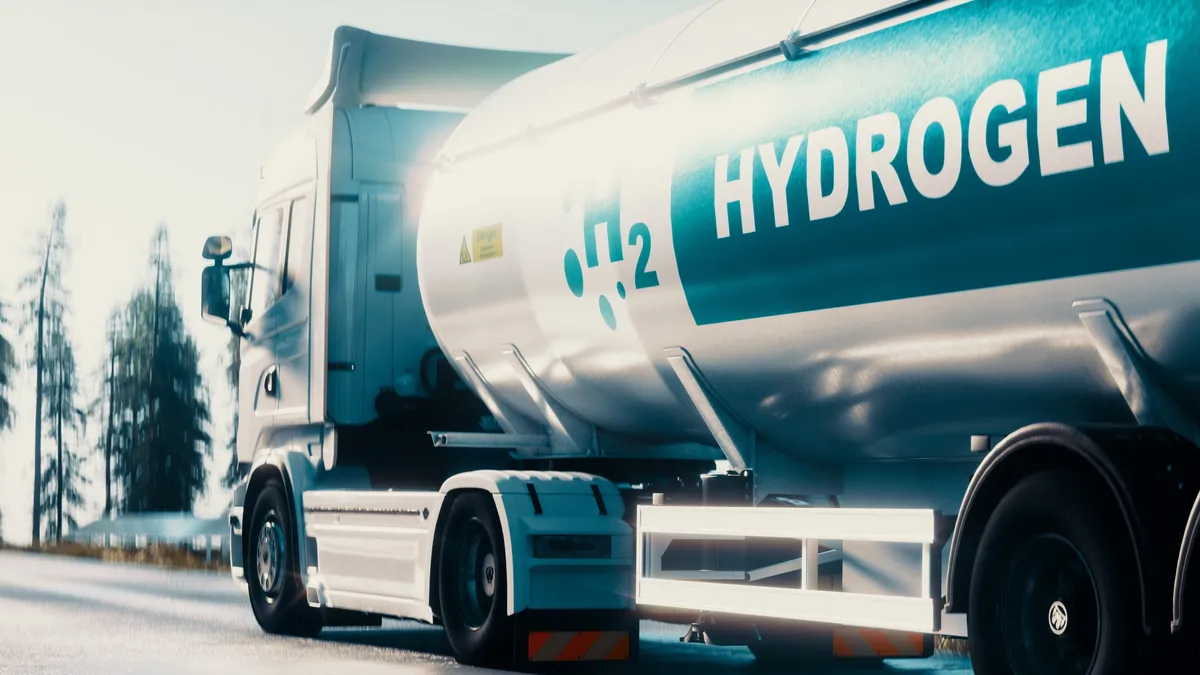 Researchers at the Deakin University in Australia have found that boron nitride, a household chemical used commonly in paints, cosmetics as well as dental cement, could unlock the potential of hydrogen as a fuel, a press release said.
Researchers at the Deakin University in Australia have found that boron nitride, a household chemical used commonly in paints, cosmetics as well as dental cement, could unlock the potential of hydrogen as a fuel, a press release said.
Read More
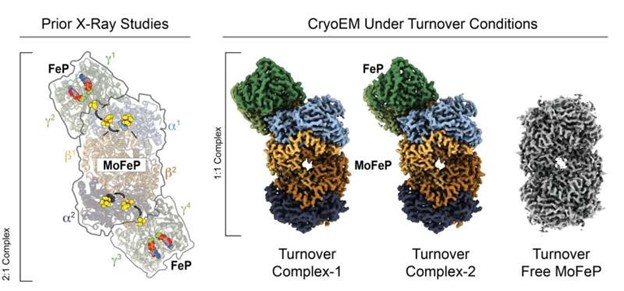 Previously, it has been impossible to capture the high-resolution images of nitrogenase, the only enzyme capable of reducing nitrogen into ammonia, during catalytic action. Now, for the first time, researchers at the University of California San Diego report near-atomic-resolution snapshots of nitrogenase during catalysis using cryogenic electron microscopy (cryoEM). The results were published in the journal Science.
Previously, it has been impossible to capture the high-resolution images of nitrogenase, the only enzyme capable of reducing nitrogen into ammonia, during catalytic action. Now, for the first time, researchers at the University of California San Diego report near-atomic-resolution snapshots of nitrogenase during catalysis using cryogenic electron microscopy (cryoEM). The results were published in the journal Science.
Read More
"Gas stations" in Zero Gravity
 To journey and return from other planets, future spacecraft may have to do something they've never done before: refuel in space. Thanks to a Purdue University experiment, scientists are now beginning to understand how cryogenic liquids behave in zero-gravity, and how this affects the future operation of propellant depots in space.
To journey and return from other planets, future spacecraft may have to do something they've never done before: refuel in space. Thanks to a Purdue University experiment, scientists are now beginning to understand how cryogenic liquids behave in zero-gravity, and how this affects the future operation of propellant depots in space.
Read More
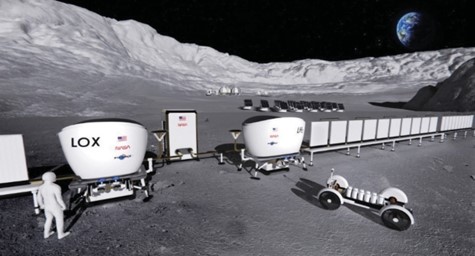 Eta Space, a new space company dedicated to developing advanced cryogenic systems for the modern space and energy age, is celebrating its three-year anniversary in June with milestones scheduled for several key projects. Eta Space is developing LOXSAT, a 135 kg demonstration satellite designed to test critical cryogenic fluid management (CFM) technologies in Earth’s orbit.
Eta Space, a new space company dedicated to developing advanced cryogenic systems for the modern space and energy age, is celebrating its three-year anniversary in June with milestones scheduled for several key projects. Eta Space is developing LOXSAT, a 135 kg demonstration satellite designed to test critical cryogenic fluid management (CFM) technologies in Earth’s orbit.
Read More
 Large spheres have been used to store liquid hydrogen for decades. In fact, two 3,218 cubic meter (850,000 gallon) liquid hydrogen storage spheres have supported space flight pro- grams at the Kennedy Space Center since the mid-1960s. Currently, NASA plans to use the latest and largest liquid hydro- gen tank ever put into production for the Artemis exploration missions to the moon and Mars.
Large spheres have been used to store liquid hydrogen for decades. In fact, two 3,218 cubic meter (850,000 gallon) liquid hydrogen storage spheres have supported space flight pro- grams at the Kennedy Space Center since the mid-1960s. Currently, NASA plans to use the latest and largest liquid hydro- gen tank ever put into production for the Artemis exploration missions to the moon and Mars.
Read More
Journey of the Maglev
 In early January 2022, a prototype mag- lev train was rolled out in southwest China’s city of Chengdu, one of the latest developments in magnetic levitation trains. The domestically developed locomotive uses high temperature superconducting and will travel with a designed speed of 620 km/h, according to Southwest Jiaotong University, one of the train’s designers. Maglev trains, levitated from the tracks and propelled by powerful magnets to avoid wheel-rail friction, are de- signed to break the speed bottlenecks facing high-speed trains.
In early January 2022, a prototype mag- lev train was rolled out in southwest China’s city of Chengdu, one of the latest developments in magnetic levitation trains. The domestically developed locomotive uses high temperature superconducting and will travel with a designed speed of 620 km/h, according to Southwest Jiaotong University, one of the train’s designers. Maglev trains, levitated from the tracks and propelled by powerful magnets to avoid wheel-rail friction, are de- signed to break the speed bottlenecks facing high-speed trains.
Read More
Penflex Controls Pressure at the Intersection of Vacuum and Cryogenic Sciences
 Vacuum technologies have advanced the field of cryogenics, allowing researchers to push the frontiers of what we know and businesses to apply that knowledge and drive innovation across a wide range of industries. The intersection of vacuum and cryogenic sciences is a demanding one. Pressure and temperature requirements create a playing field where only certain materials of construction and precise techniques and processes can play. Whether a component within a closed cryogenic system or a transfer link to be reused and repurposed, metal hoses are well suited for these exacting environments.
Vacuum technologies have advanced the field of cryogenics, allowing researchers to push the frontiers of what we know and businesses to apply that knowledge and drive innovation across a wide range of industries. The intersection of vacuum and cryogenic sciences is a demanding one. Pressure and temperature requirements create a playing field where only certain materials of construction and precise techniques and processes can play. Whether a component within a closed cryogenic system or a transfer link to be reused and repurposed, metal hoses are well suited for these exacting environments.
Read More
 The ECOSystem Spaceborne Thermal Radiometer Experiment on Space Station (ECOSTRESS) instrument is a multispectral thermal infrared imaging radiometer, and its primary mission is to investigate and understand how climate change affects water and carbon usage on Earth.[1] The instrument measures the surface temperature of Earth with a resolution that is able to capture individual farm fields.[2] The data collected by ECOSTRESS is processed into a product called the Evaporative Stress Index, which indicates whether plants are stressed and if a drought is likely to occur.[2]
The ECOSystem Spaceborne Thermal Radiometer Experiment on Space Station (ECOSTRESS) instrument is a multispectral thermal infrared imaging radiometer, and its primary mission is to investigate and understand how climate change affects water and carbon usage on Earth.[1] The instrument measures the surface temperature of Earth with a resolution that is able to capture individual farm fields.[2] The data collected by ECOSTRESS is processed into a product called the Evaporative Stress Index, which indicates whether plants are stressed and if a drought is likely to occur.[2]
Read More
by Michael Werner, Project Scientist, Spitzer Space Telescope—Jet Propulsion Laboratory, California Institute of Technology

NASA’s Spitzer Space Telescope, launched in August 2003 and decommissioned in January 2020 after more than 16 glorious years of exploration of the universe at infrared wavelengths, was a technical and scientific marvel. Infrared astronomical studies at wavelengths longward of 1 micron, somewhat beyond the limit of human vision at around 0.7 microns, began in earnest around 1960. These early studies, carried out on ambient temperature telescopes within the atmosphere, advanced astronomical understanding of targets from planets within the solar system to distant and highly luminous galaxies. However, they could not disguise the fact that the earth is a hostile environment for infrared astronomy.
Read More
 Recently, NIRISS, one of NASA’s James Webb Space Telescope’s four primary scientific instruments concluded its postlaunch preparations and was declared ready for science. Now a second of Webb’s four primary scientific instruments, known as the Mid-Infrared Instrument (MIRI), has also concluded its postlaunch preparations and is now ready for science.
Recently, NIRISS, one of NASA’s James Webb Space Telescope’s four primary scientific instruments concluded its postlaunch preparations and was declared ready for science. Now a second of Webb’s four primary scientific instruments, known as the Mid-Infrared Instrument (MIRI), has also concluded its postlaunch preparations and is now ready for science.


